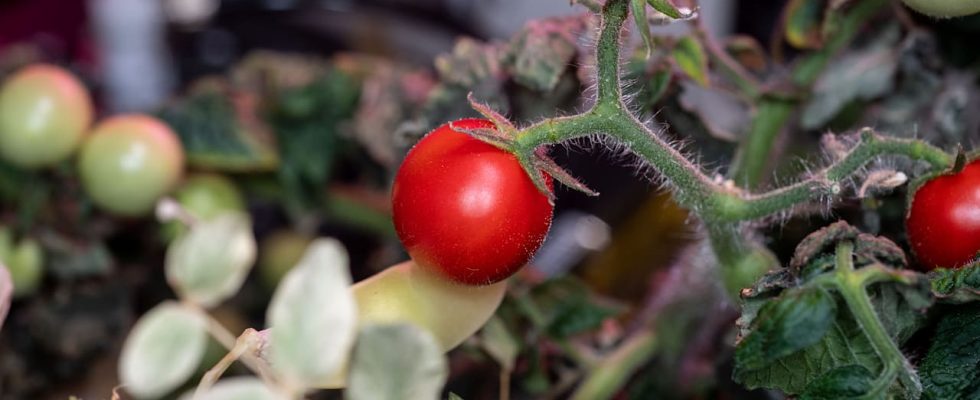It was one of the strangest mysteries in the universe…
But the space miracle wasn’t about extraordinary life in space, but about a tomato! US astronaut Frank Rubio (47) had this as part of an agricultural experiment on the International Space Station ISS iGrown from seeds in weightlessness.
In March of this year, Rubio was one of the first to do so Space grown Tomatoes were harvested and, according to him, stored properly. But she disappeared into the vastness of space. He spent up to 20 hours searching. There were no scientific reasons why the astronaut searched for the vegetables for so long. He simply wanted to prove to his colleagues that he hadn’t eaten them, reports “The Guardian”.
Astronaut Frank Rubio checks the progress of the space tomatoes during his time on the ISS
Tomato reappeared two months later
When he landed back on Earth on September 27, he told reporters: “I was pretty sure I had moored it in the right place. And when I came back she was gone. Hopefully one day someone will find a little shriveled thing.”
But it took around two months until the tomato was finally found and Rubio was exonerated. The tiny, shriveled remains were actually discovered by the current ISS team, as were members of the seven-person crew announced this week in a live broadcast from orbit on the occasion of the 25th anniversary of the ISS with a wink.
Colleagues “exonerate” Frank Rubio
“Our good friend Frank Rubio has been accused of eating the tomato for some time. But we can relieve him. We found the tomato,” explained NASA astronaut Jasmin Moghbeli.
That was definitely a big relief for Rubio. Ultimately, he had spent 371 days in space – the longest time ever for a US astronaut. He certainly didn’t want to be remembered as a tomato thief.
The ISS has its own vegetable production system. According to NASA, the Rubio tomato was one of only 12 fruits that were successfully germinated and ripened as part of the so-called Veg-05 project. For comparison, the scientists had the same number of tomatoes on Earth: 100 ripened here.
